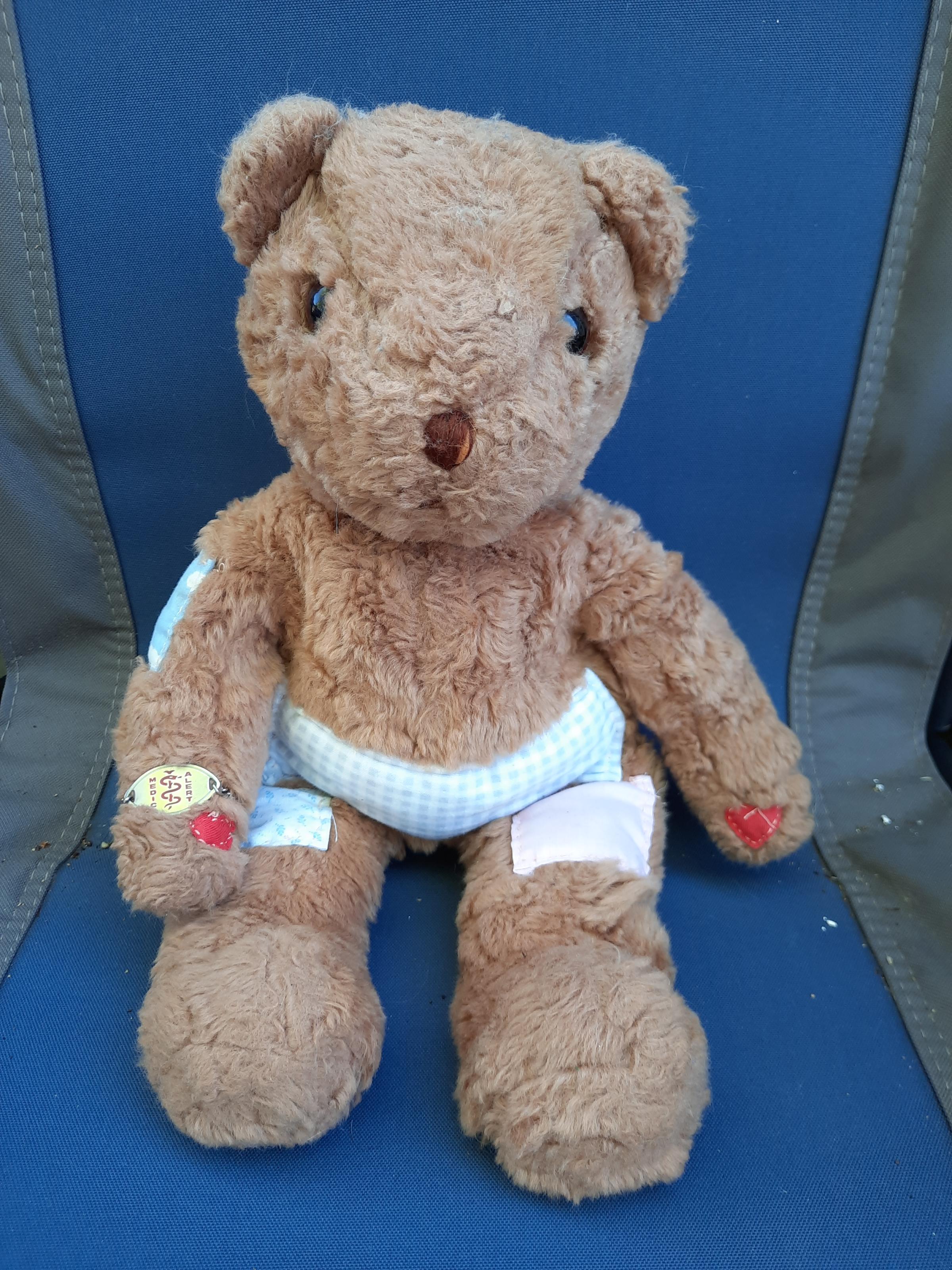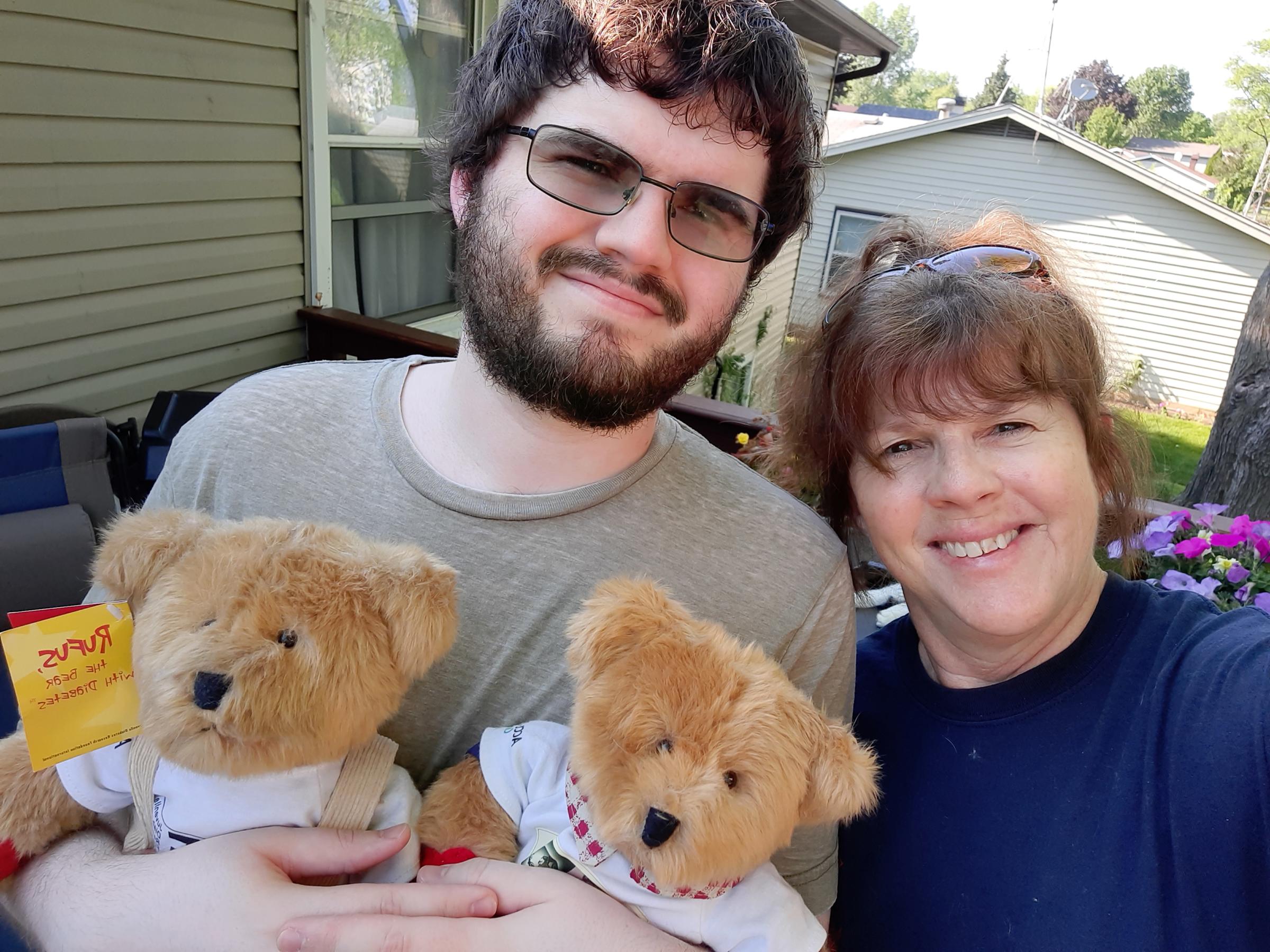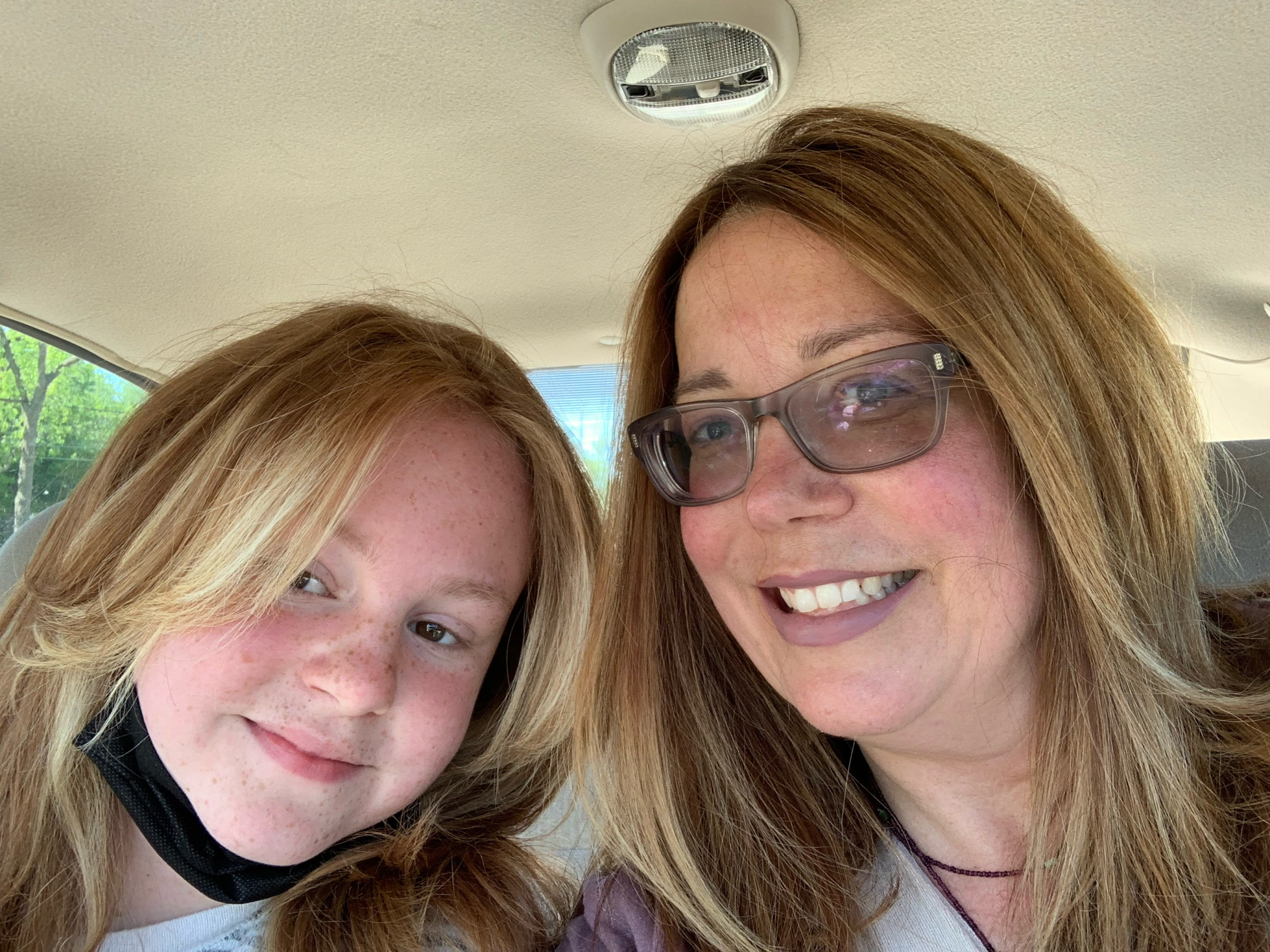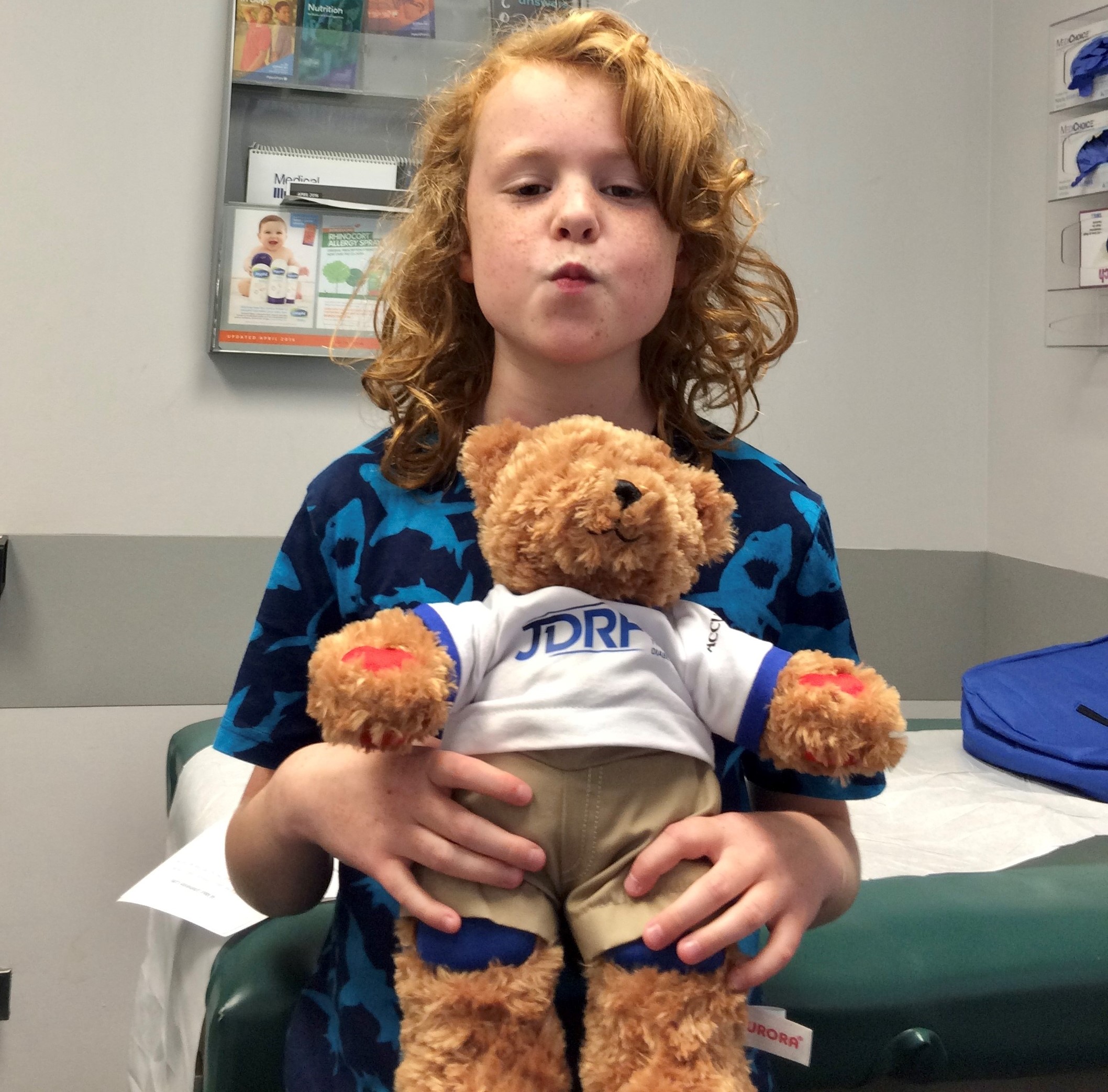Happy Birthday, Rufus!

Rufus the bear’s 25th birthday is on June 19! In recognition of this milestone, we wanted to share the local Illinois story of how Rufus came to be. We will also be sharing your Rufus stories and pictures throughout the month of June! Post a picture with your Rufus and tag @JDRFIllinois and you just might see it on our social media! #hbdayrufus
How the Bear Came to Be
The day a child is diagnosed with type 1 diabetes (T1D) is a day of shock, disbelief, fear, and sadness that can overwhelm even the strongest among us.
But when a child gets those first doses of insulin and starts to feel better, a glimmer of hope appears. Having a friend like Rufus along for the ride is a simple comfort—and at that moment, Rufus is worth his weight in gold.
As we continue the journey of unlocking the science that is improving lives, and ultimately, finding cures—we take time to celebrate Rufus, a JDRF icon, who turns 25 this June.
Rufus’s story begins in the Chicago suburb of Lake Zurich in 1994 when a 3-year-old boy named Brian was diagnosed with T1D. During Brian’s hospitalization, the staff gave him a coloring book to learn about his new diagnosis. “When you go to the hospital,” said Carol, “You hope to come home cured.” Unfortunately, this is not the case with type 1 diabetes.
Brian’s mom, Carol Cramer, a classically trained musician, and stay-at-home mom, felt that there had to be a better way to educate her son. She hoped to come up with something that could comfort Brian and help him understand his new world. Carol and her son, Brian, pictured below.

Months passed and Carol found herself struggling with anxiety and depression – she felt alone and scared. “You can’t do anything to get [your child] totally better, and you go through so many emotions, and you feel so much guilt,” says Carol. Like so many type 1 parents, Carol wondered if she had done something to cause her son’s diabetes.
Flash forward to June 1, 1996. Carol awoke with an idea, and she knew exactly what she needed to do. “It was like blinders were put on me. Nothing was going to be able to get in my way”, described Carol. “It was such a clear path.”
Carol, feeling renewed, went to the store to buy the perfect-sized teddy bear. She used a cereal box to cut out templates for felt patches that she sewed onto the teddy’s arms, thighs, buttocks, and stomach. A red heart adorned the chest to represent blood and blood glucose. Carol dressed the bear in a Chicago Bulls outfit. Rufus had come to life.
The Beginning of an Era
Brian’s birthday rolled around a couple of weeks later. “Happy Birthday Buddy,” Carol happily awoke her son, “You’re 5-years-old today.” Brian excitedly asked if he had gotten a cure for his birthday. “Not yet,” said Carol, “but we mustn’t give up hope.”
“Brian told me it was not his birthday,” recalled Carol, “Because he promised himself that when he turned five, he wouldn’t have diabetes and he would get the cure.”
Brian did not want his presents or cake, telling his mother to take it all back. He did not want to get out of bed, and as far as he was concerned, his birthday completely flopped. Enter the Juvenile Diabetes Foundation (JDF), known today as JDRF.
Feeling exasperated and unsure how to help her son, Carol called the JDF Chicago Chapter. Robin Harding, the executive director at the time, answered the phone. Carol explained that it was Brian’s birthday, and she asked Robin if Brian could come to the office to meet the people working towards the cure. Carol hoped that this visual might help her son.
Carol packed up Brian and her other four children and drove from her home in Lake Zurich, Illinois, to the JDF Chicago office to meet Robin.

“Robin got down on her knees, and she took Brian’s hands into hers,” recalled Carol, “She was looking at him eye to eye, and she promised him that there wasn’t a day that was going to go by that JDF was not working on a cure for his diabetes and everyone living with diabetes. Every day someone would be working toward that cure. That was her promise to him.”
Robin asked Brian about the teddy bear in his arms. Carol recalled Brian’s reply, “This is Rufus. He is my bear who has diabetes.” Those words signaled the beginning of an era. “I could not get over the thoughtfulness and genius of this incredible and humble mom,” said Robin, “What an amazing educational tool she created out of pure love.”
A Rufus for Anyone Who Needed One
Carol graciously offered to make a Rufus bear for anyone who needed one. Little did she know that every child with diabetes needed Rufus—and demand grew quickly. “I trained my body so that I only slept four nights out of the week and was up all night three nights out of the week to fulfill all the orders,” recalled Carol, “By hand, I had sewn on patches for 1,637 bears and my mother-in-law was sewing outfits. My mother-in-law was a seamstress and a beautiful woman who shared her heart and sewing talent—and so that’s how we kept things going. I had purchased all kinds of bears wherever I could find them—they were all unique. Not a single bear was the same.”
Many partnerships evolved over the years, and eventually, Rufus’s manufacturing was outsourced. However, the global commercialization of Rufus did not make anyone rich. In fact, Carol took a loan out against her life insurance policy to purchase the first few thousand bears.
The Power of Play
When asked about her dream for the future, Carol replied, “My dream now is to share Rufus’ story. If I could share this story and what JDRF was willing to take on, what they were willing to hear. The creation of outreach and the different things that we all learned along the way. I’ve wanted to be able to share this story because I feel that it would bring so much to JDRF. Because they are to be honored. The JDRF heard me. They heard a mom, and they listened. I have the proof.”
Robin Harding has the proof, too. “To this day”, said Robin, “When I read about Rufus, I smile and think about how Carol not only impacted Brian, but hundreds of thousands of children with diabetes.”
Rufus rightly has a massive fan club. Yes, he is cute and cuddly, but according to an article published in one of the oldest public health journals in Europe, Rufus could very well be helping children cope with their diagnoses.
In the article, the authors claim that play “is proven to be of high therapeutic value for ill children, thus contributing to both their physical and emotional well-being and to their recovery,” and conclude that play “helps to investigate issues related to the child’s experiences in the hospital and reduce the intensity of negative feelings.”

We are forever grateful to Carol Cramer, her son Brian, and all the partners who have supported Rufus along the way. As we push forward, twenty-five years later, Rufus continues to remind us that sometimes, the smallest things make the biggest impact.

This blog post was written by guest author: Danica Uzelac, RN, BSN, CCRC. She is the mother of a T1D daughter, a JDRF volunteer, and a freelance writer at Big Apple Health Communications. Danica, and her daughter Anne, pictured below.


CITATION: Koukourikos, K., Tzeha, L., Pantelidou, P., & Tsaloglidou, A. (2015). THE IMPORTANCE OF PLAY DURING HOSPITALIZATION OF CHILDREN. Materia socio-medica, 27(6), 438–441. https://doi.org/10.5455/msm.2015.27.4